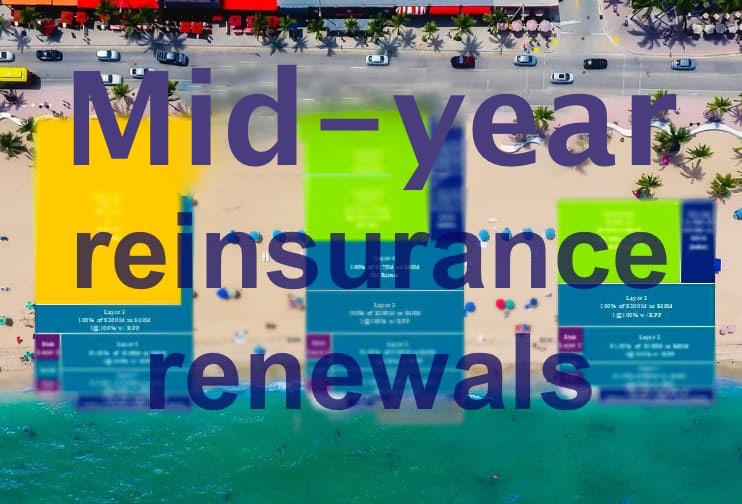Mid-year renewals: Retrocession capacity seen as more abundant than at 1/1

At the mid-year reinsurance renewals our market sources are suggesting that availability of retrocession is far better than was seen at 1/1, with rate increases also decelerating more than had perhaps been anticipated just weeks ago.
Now, this doesn’t mean the retrocession market is fully-functional at the June and July renewals, but it is a far better situation for protection buyers than was seen earlier in the year.
Helping this has been the unlocking of some trapped collateral over recent months, which has helped a number of collateralized retro reinsurance providers, largely ILS funds, to enhance their capacity offering for the middle of the year.
Which is very good timing for them, as in some cases we’re told ILS funds with a retro focus actually have more capacity to underwrite retro than even they had been anticipating.
In the current hard market environment, with much more favourable terms for capacity providers, this does mean those that can deploy capacity to write a larger portfolio of retro than they had been targeting just a few months back, stand to benefit significantly, as do their investors.
We’re told aggregate retrocession remains in short supply and where it is available it is under strict terms, particularly around naming of perils, event based deductibles and other key conditions of coverage.
The hours clause has also been a focus at the mid-year reinsurance renewals, we’re told, with shortening seen at both the reinsurance and retrocession levels.
Overall, while rates are up, buyers seem more at ease with paying or protection, perhaps a function of them maximising the opportunity on the reinsurance inwards side while rates are higher, leading to a need for a little more protection.
Capacity is only said to be sufficient while buyers are still securing less retrocession than they did a few years back. Were those levels of demand to recover, the market would see a shortfall for retro protection, leading to greater challenges.
But, those players that had become almost addicted to cheap retrocession are now having to be much more reasonable in what they buy, which is leaving some capacity available for others to top-up retro towers a little more speculatively, we hear.
One interesting point we’ve heard is that there is some fresh capacity in the retro market, raised in just the last couple of weeks and we believe at a collateralized or ILS player. We’re not sure how significant that is though.
Perhaps more meaningful for later this year, analysts at KBW said they had heard during their Bermuda trip that an A-minus rated startup with as much as $1 billion of capital is being formed with a target on the retro space.
That could be interesting for retro dynamics later this year, when capacity may fall short again if reinsurance demand keeps rising.
While rates for retro coverage will be up year-on-year, we’re told that in many cases the actual rates retro capacity is being sold at are a deceleration from where the market had been anticipating they would be earlier in the quarter.
Which could be a function of some capital entering, or just a realisation that pricing is nearing the peak of the hard market cycle.
Read all of our reinsurance renewals news and analysis.






